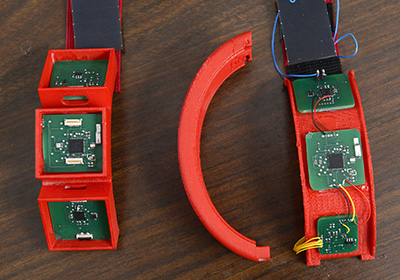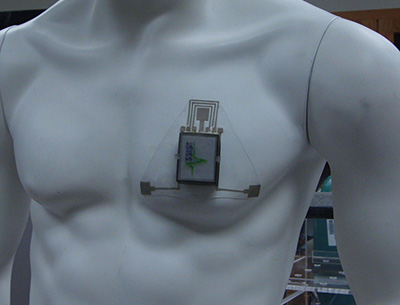Researchers have developed an integrated, wearable system that monitors a user’s environment, heart rate and other physical attributes with the goal of predicting and preventing asthma attacks. The researchers plan to begin testing the system on a larger subject population this summer.
The system, called the Health and Environmental Tracker (HET), is composed of a suite of new sensor devices and was developed by researchers from the National Science Foundation’s Nanosystems Engineering Research Center for Advanced Self-Powered Systems of Integrated Sensors and Technologies (ASSIST) at North Carolina State University.

The HET system incorporates a host of novel sensing devices, which are incorporated into a wristband and a patch that adheres to the chest.
The patch includes sensors that track a patient’s movement, heart rate, respiratory rate, the amount of oxygen in the blood, skin impedance and wheezing in the lungs.
The wristband focuses largely on environmental factors, monitoring volatile organic compounds and ozone in the air, as well as ambient humidity and temperature. The wristband also includes additional sensors to monitor motion, heart rate and the amount of oxygen in the blood.
The system also has one nonwearable component: a spirometer, which patients breathe into several times a day to measure lung function.

The work was done through the ASSIST Center at NC State, under NSF grant number EEC-1160483. The work was also supported by the National Institute of Environmental Health Sciences, under grant number R01ES023349, and by the Environmental Protection Agency, under cooperative agreement number CR 83578501.
